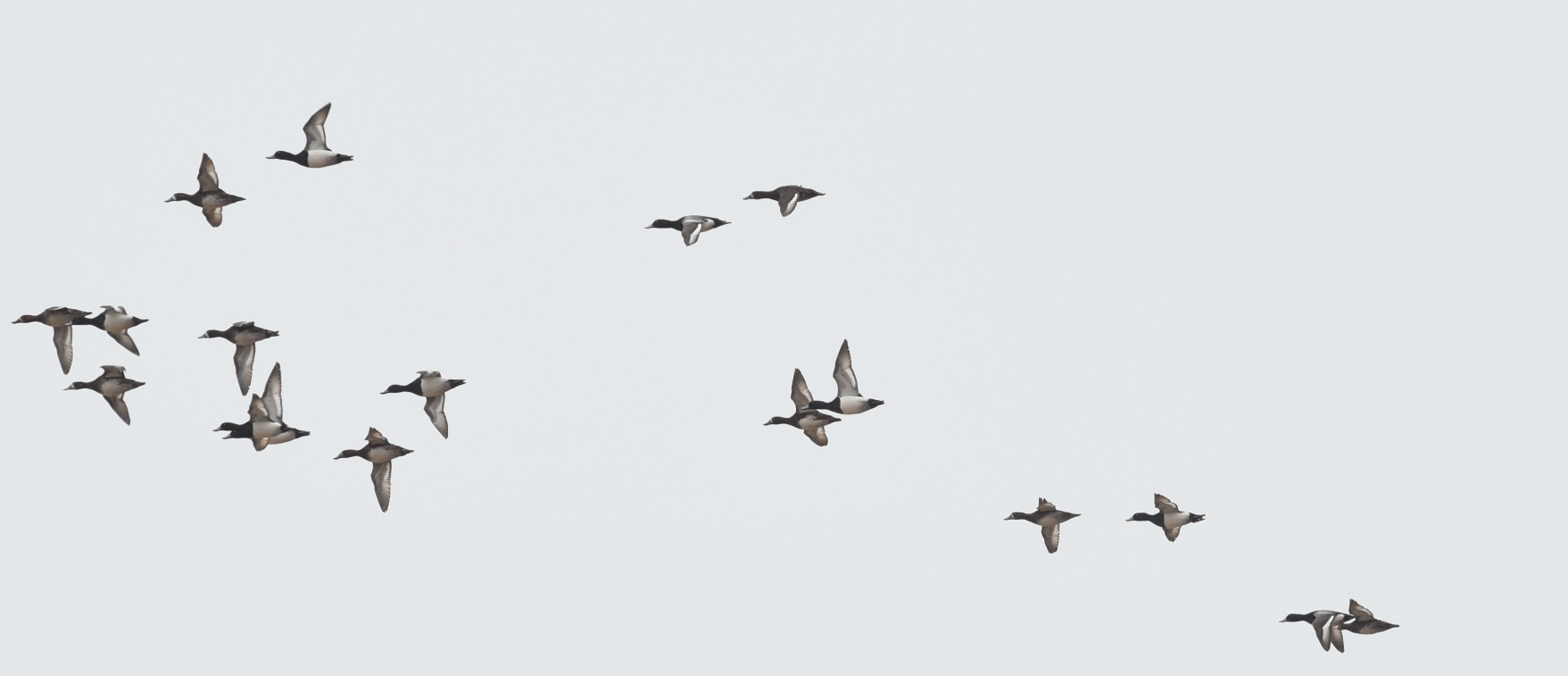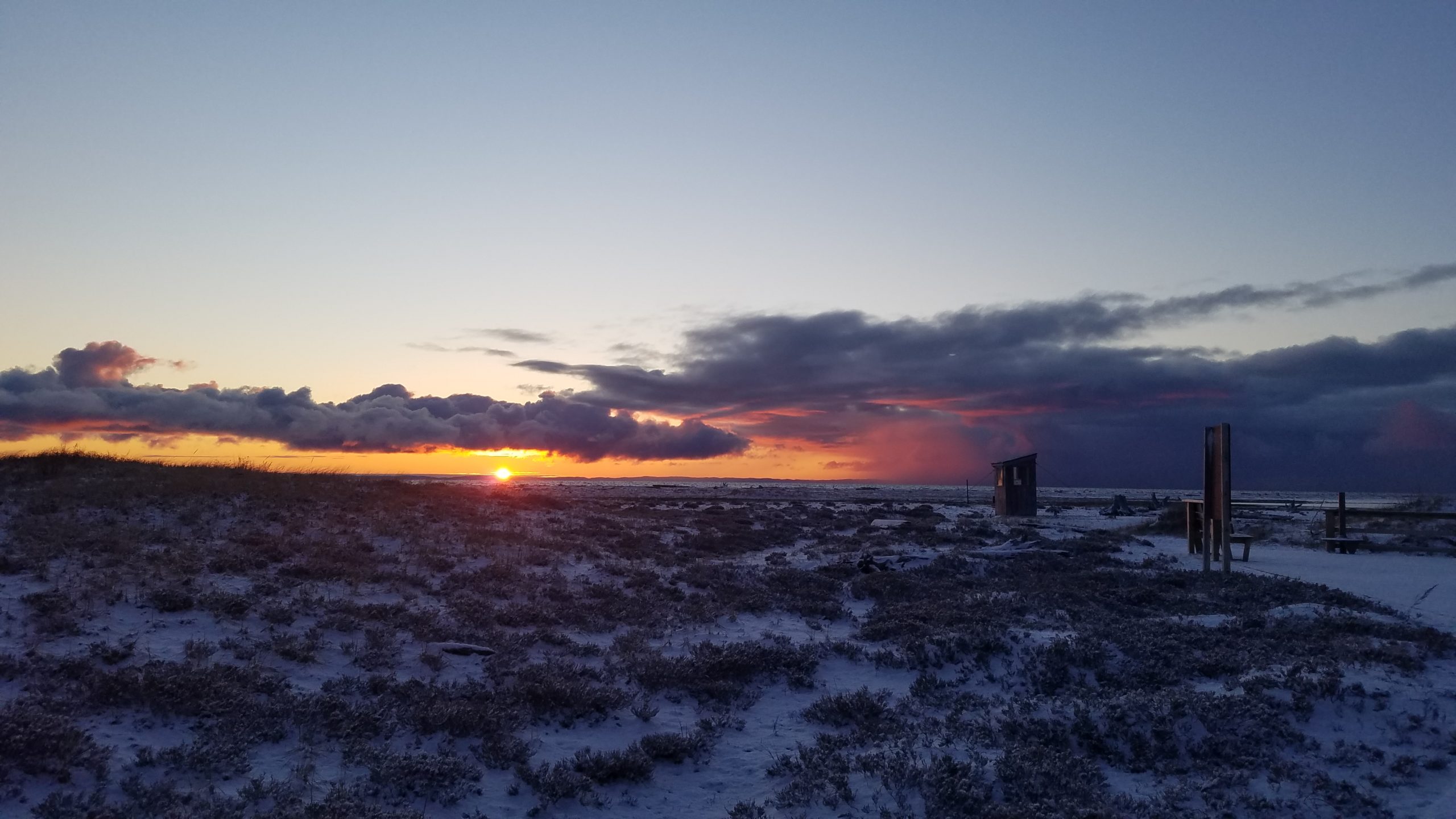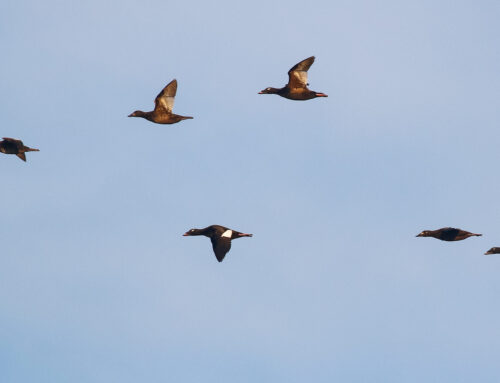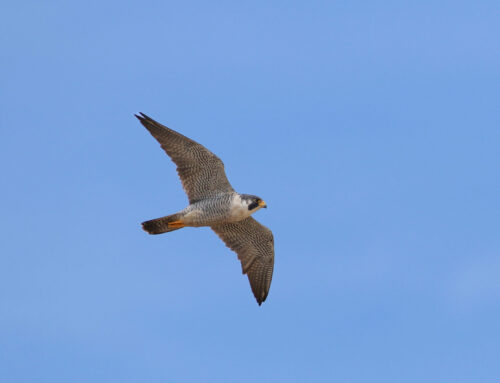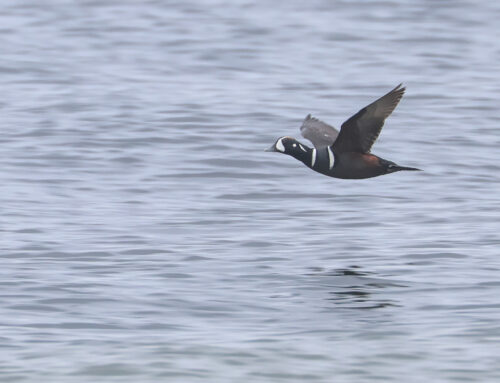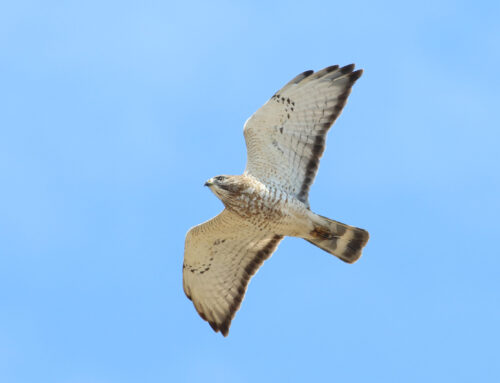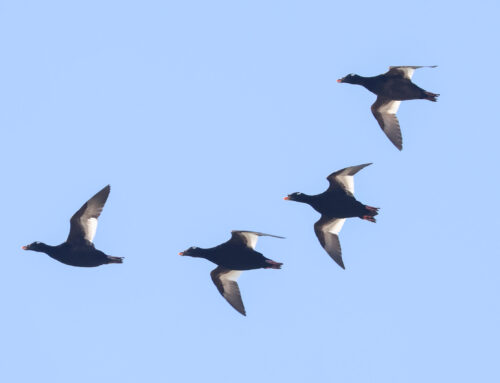Lines of ducks stream through the sky. By day, I search for them. (For most of the last week — a cheek-numbing stretch of demoralizing north winds — it’s seemed that I seek far more than I find.) Then, by night, when I close my eyes and drift off, the ducks reappear, twisting their way through the dream world. The degree of challenge offered by WPBO’s waterbird count is, for me, a big part of its allure. When I pan down the bay and pick up a few dozen fast flyers rushing towards the Point, this savage sort of joy hits. I often don’t immediately know what I’m looking at. But — I do know that, to my best ability, I must decipher their number and identification before they’re gone: gone to the heat shimmer, gone to bad light, or merely gone away. As I continue to accrue hours at the waterbird count, I’ve found that “best ability” is something that can perpetually be nudged to further and further horizons. And for me, this is great fun. (If you are interested in nudging your own ability, the Peterson Reference Guide to Seawatching is an unparalleled resource for identifying waterbirds in flight.)
Light here is fickle, more a frustration than an aid. Its illusions should not be given absolute trust. Because of this, initially, it is a better practice to focus more on the birds’ shape, the flock’s shape, and the flight style than on markings. Do the feet trail out behind, like a loon’s do? Are the wingbeats shallow, like a merganser’s? Goldeneye, known colloquially as “whistlers,” have a distinctive sound to the flight, detectable at surprising distances. Oftentimes, the wings are heard before the bird is seen.
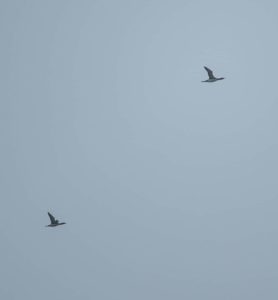
Red-throated Loons have a completely different silhouette in flight than Common Loons. They are more petite, slimmer-necked, and they tend to raise and lower their heads frequently in flight.

Loons are long-necked, the feet trail out behind, and the wings are long and narrow. Flight is powerful. Common Loons appear much larger-headed and pot-bellied than Red-throated.
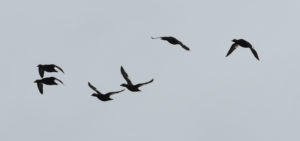
Scoters are robust, and in larger flocks, birds tend to string out into evenly spaced lines. Vilag.
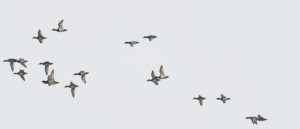
Aythya ducks, which include scaup, travel quickly in groups that perpetually break apart and reconform. On Greater Scaup, like these, the white wingstripe extends the length of the wing.
Is the flock a line of evenly spaced birds that generally keep their position? Scoters, most likely. Does the flock — both its identification and counting — inspire feelings of desperation and ineptness? Consider Aythya: the scaup and Redhead and Ring-necks. They travel in large flocks (I had a group of 80 this week; for a spring flock at Whitefish, that’s a big one!) which very regularly disintegrate into chaos. They bunch together, then pull apart — and they travel very quickly. And, on top of this all, their identification is not so straightforward. Deciding between the scaup does, in fact, come down to marking: Greaters have a longer wingstripe than a Lesser, but this is subtle. It’s providential that there’s a “Greater/Lesser Scaup” option in Dunkadoo.
On that note, any honest counter detects birds most days that can’t be entirely identified. Distance and heat distortion take their toll; heavy flights do, too — during these, if you take the time to decide which scaup camp the wingstripe falls to, you might miss the next flock entirely. So there is a great range of “sp.” options we use, ranging from the very narrow (“Mallard/American Black Duck”) to the very broad (“Waterbird sp.”). There is no shame in using these options.
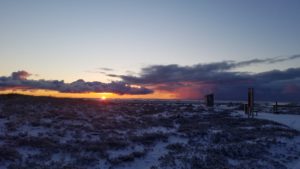 Loons have been the focal birds at the waterbird count this week. During this period, we tallied 184 Red-throated (high count=68, on May 3) and 1,494 Common (peak on May 5, 376). Also on May 3, Alec had a great flight of Red-necked Grebes (117) and the season’s first Black Scoter. Our first Surf Scoter made an appearance on May 5, and I had a strong Greater Scaup flight on May 6 (148). The weather the last few days has been far less than ideal: very strong north winds with frequent snow squalls. It does make for some nice sunrises, though…
Loons have been the focal birds at the waterbird count this week. During this period, we tallied 184 Red-throated (high count=68, on May 3) and 1,494 Common (peak on May 5, 376). Also on May 3, Alec had a great flight of Red-necked Grebes (117) and the season’s first Black Scoter. Our first Surf Scoter made an appearance on May 5, and I had a strong Greater Scaup flight on May 6 (148). The weather the last few days has been far less than ideal: very strong north winds with frequent snow squalls. It does make for some nice sunrises, though…
As always, thank you for reading!
-Alison Vilag, WPBO Waterbird Counter
If you are considering visiting the Point, please read this important message from Michigan Audubon and WPBO Field Staff.
Maneuvering the ever-changing implications of COVID-19 has necessitated constant adaptation and evaluation for us all. Michigan Audubon and WPBO have been proactive in taking measures that protect our staff, our physical community in Paradise, and the Michigan bird
If you are considering visiting the Point, please read this important message from Michigan Audubon and WPBO Field Staff.
Maneuvering the ever-changing implications of COVID-19 has necessitated constant adaptation and evaluation for us all. Michigan Audubon and WPBO have been proactive in taking measures that protect our staff, our physical community in Paradise, and the Michigan birding community, and we have found American Birding Association’s recent guidelines on birding and social distancing a useful resource for guiding bird-related travel decisions. While there are hopeful signs that we are rounding the corner with this virus, Michigan Audubon does not want to sow precocious optimism that encourages long-distance travel. Please take a minute to read these ABA guidelines, and to imagine them through the lens of the eastern Upper Peninsula, which does not have the medical resources of Michigan’s more-developed areas. Chippewa County and its adjacent counties have just three hospitals, and only one of these has more than 100 beds; they all are at least an hour’s drive from the Point. WPBO appreciates and requests your continued conscientiousness as the season’s migration begins to ramp up, and does not condone birding travel that is not local. Keep in mind that the Owl’s Roost Gift Shop and public observation of owl banding are currently closed. In the meantime, we will virtually share the Point with you as best we can until it is safe for all parties to enjoy it together. We hope that will be soon.

